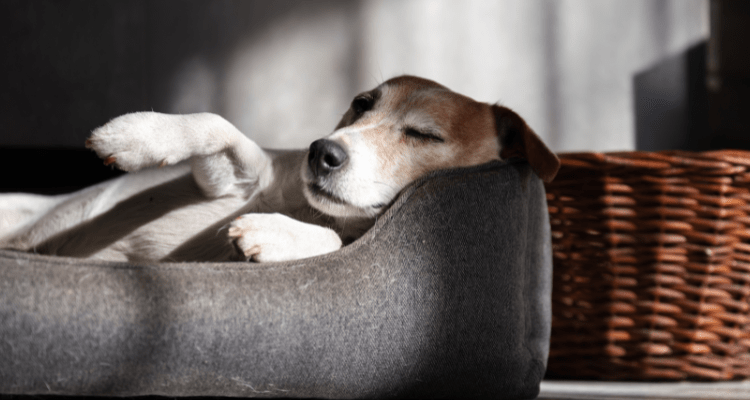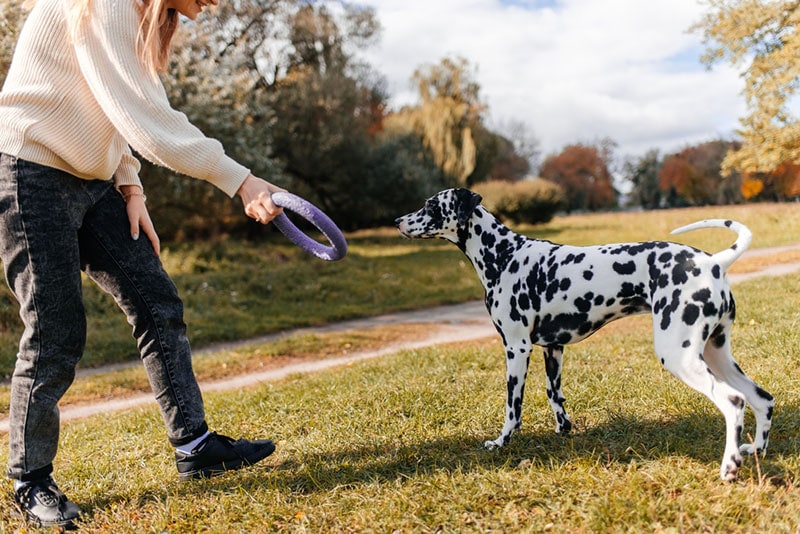
Do dogs dream like us humans? This is a question that has fascinated a lot of people. Although little is known about the vast dreamland of our pets, there is enough scientific evidence that shows dogs do dream. Happy, nightmarish and normal, dogs experience all kinds of dreams like us.
When it’s a happy dream, dogs go into a relaxed mode, where they also get a comfortable sleep. Nightmares on the other hand can be extremely uncomfortable for them, even making them whine, growl or even bite.
Here are some amazing facts about dog dreams that you might have never heard before.
How Long Does It Take For Dogs to Start Dreaming?
Once the dog enters into sleep, their breathing becomes deeper and follows a regular pattern. They experience Slow Wave Sleep (SWS), where their mental process slows down, although their muscle functioning remains active. After 20 minutes, an average dog begins to dream, while they are in Rapid Eye Movement (REM) Sleep.
Interestingly in REM sleep, dogs also like humans go into a deep, unresponsive state where they start dreaming vividly.
Dogs Replay Their Daily Happenings in Dreams
Once the dogs are in the dreaming stage, their breathing becomes shallow and irregular, with occasional muscle twitching. It is also marked by rapid eye movement of their eyes behind their eyelids, also known as REM movement. At this stage, dogs usually dream of playing fetch with balls, chasing cats or spending time with their owners. In short, they may be recreating the events that had happened during the day or sometime in the past.
Signs that Reveal Your Dog Is Having a Bad Dream
If you see your dog whining or growling during their sleep, they are likely experiencing a nightmare. During a bad dream, the dog’s breathing will become irregular and they may even start to pant. Most importantly, don’t confront the dog during the situation as they can also bite you. Instead, give them space and wait for them to be relaxed.
To minimise the problem of nightmares in dogs, give them a cosy environment to sleep in, preferably in a comfortable dog bed. If your dog is relaxed, the chances of a bad dream happening will be lesser.
Puppies and Small Breeds Dream More Often Than Larger Dogs
This fact might be surprising for a lot of people, but the age and size of your dog have a significant effect on the frequency and the length of their dreams. Studies have shown that puppies seem to dream more than adult dogs. Similarly, small-breed dogs also tend to dream more than large-breed dogs. For example, a toy breed like Shih Tzu may dream every 10 minutes, while a big dog like Labrador Retriever may only dream once every 90 minutes.
Daily Events Can Influence How a Dog Sleeps
Research has also shown how a dog will sleep depends a lot on what they do during their day as well. For instance, if your dog plays actively during the day, they are less likely to spend much time in the drowsiness stage of sleep, and more in REM (Non-Rapid Eye Movement) and REM (Rapid Eye Movement) phase. Dreaming most often occurs in the latter two phases.
Do Dogs Also Dream About Their Owners?
This is one of the most common questions among many dog parents. While no one can peek into the minds of dogs, there is a high chance that they do dream about their owners. This is because dogs spend most of their time with their owners, and the walking sessions, cuddles, games etc create a lot of memories in the dogs. These memories form a key element in their dreams.
By and Large,
The next time you see your beloved dog lost in his dreamy land, know that it is more than a show. It is their moment for introspection. They are watching their favourite life moments, a mixture of good and bad emotions, and also their potential threats in the backscreen of their eyes. It just shows their ability to imagine and how they revisit their memories.



